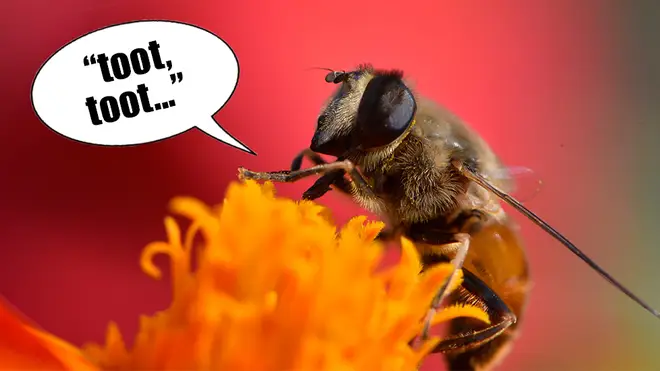On Air Now
Calm Classics with Myleene Klass 10pm - 1am
16 June 2020, 11:56 | Updated: 16 June 2020, 12:01

Scientists have decoded a call-and-response between newborn queen bees, ‘tooting and quacking’ in their hives.
Scientists have found that newborn honeybee queens sing duets in the hive (no, sadly not ‘Flight of the Bumblebee’…).
They have decoded ‘tooting’ and ‘quacking’ noises of the queens, which are born thanks to diligent worker bees, busying away in the hive. The worker bees seal eggs inside wax cells and feed them a special, richer food called “royal jelly”.
When ready to emerge, the queens quack from inside their cells. When one hatches, its quacking turns to tooting, warning the worker bees to keep the other eggs captive – if two queens free themselves at the same time, they fight to the death.
Dr Martin Bencsik, a professor from Nottingham Trent University who carried out the study by using highly sensitive vibration detectors in the hive, described the duets as “extraordinary”.
“You can hear the queens responding to each other,” he told the BBC. “It has been assumed that the queens were talking to other queens– possibly sizing one another up vocally to see who is strongest. But we now have proof for the alternative explanation.”
Read more: Bees have set up a hive inside this cello >

Professor creates hive for 20,000 honey bees in a cello
‘Tooting’ signals a queen moving around the colony, announcing her presence to the worker bees. And ‘quacking’ is a queen ready to come out, but still captive inside its cell.
But the queens are not talking to each other, Dr Bencsik explained. “It’s communication between the queen and the worker bees – an entire society of tens of thousands of bees trying to release one queen at a time.
“Quacking queens are purposefully kept captive by the worker bees – they will not release the quacking queens because they can hear the tooting.
“When the tooting stops, that means the queen would have swarmed [split the colony and set out to find a new nest] and this triggers the colony to release a new queen.”
Dr Bencsik told the BBC’s Victoria Gill that bee communication was “absolutely splendid” to observe. “All decisions are group decisions. It’s the worker bees that decide if they want a new queen or not.”
This isn’t Dr Bencsik’s first musical foray into bee society. Last year, he encouraged a swarm of bees to set up hive inside his cello, using the reclaimed instrument to research the flying insects’ vibrations and sounds.